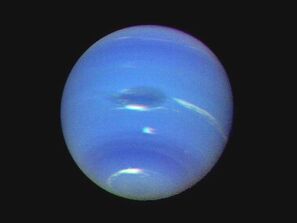NEPTUNE
|
Neptune is the farthest known planet from the Sun. It is the only planet that was predicted mathematically before being observed. Its clouds of water and frozen methane may hide a strange ocean with an exotic type of super-hot ice and diamond rain! It has the fastest winds in the Solar System at over 2,000 km/h. Massive storms often appear across the planet, the most famous being the Earth-sized Great Dark Spot. Neptune also has a faint ring system made of ice and dust.
|

